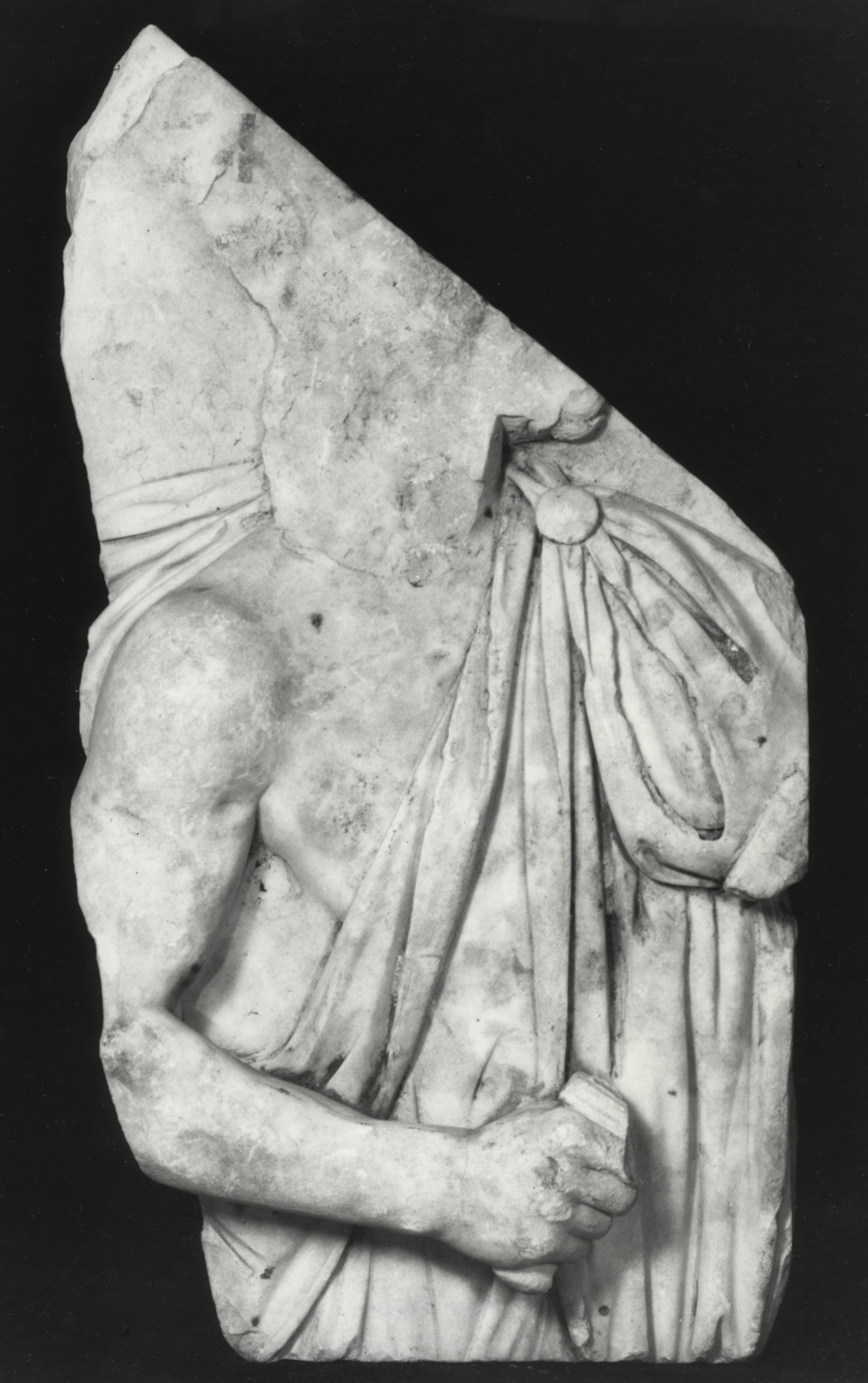Relief Fragment Depicting Hermanubis
(Roman Empire )
This relief fragment depicts Hermanubis, a deity that combined the elements of Egyptian Anubis (including the head of a jackal) with those of Graeco-Roman Hermes/Mercury. Although the jackal head is almost completely obliterated, traces of a long, pointed ear are visible on the left side of the stone, while the snout is partially preserved below the break. His garment is secured with a circular fibula over his left shoulder, leaving his right arm and part of his chest exposed. In his proper right hand, he grips the handle of an object, possibly a sistrum based on other Roman-period depictions of the god. He may have held a caduceus or a palm frond in his now-missing left arm.
The piece is cut off and worked rough at the right side and in a diagonal line at the top. There are two dowel holes in the top, and one in the side. There is clamp cutting at the top, and mortar in the drapery.
Provenance
Provenance (from the French provenir, 'to come from/forth') is the chronology of the ownership, custody, or location of a historical object. Learn more about provenance at the Walters.
Don Marcello Massarenti Collection, Rome, by 1894, [mode of acquisition unknown] [marble no. 62]; Henry Walters, Baltimore, 1902, by purchase; Walters Art Museum, 1931, by bequest.
Conservation
| Date | Description | Narrative |
|---|---|---|
| 1/1/1959 | Treatment | cleaned |
| 6/22/1961 | Treatment | cleaned |
| 7/20/1970 | Treatment | cleaned |
| 1/1/1992 | Technical Report | x-ray diffraction; other |
| 3/20/2014 | Treatment | cleaned |
Geographies
Roman Empire (Place of Origin)
Measurements
H: 22 1/16 x W: 11 7/16 in. (56 x 29 cm)
Credit Line
Acquired by Henry Walters with the Massarenti Collection, 1902
Location in Museum
Not on view
Accession Number
In libraries, galleries, museums, and archives, an accession number is a unique identifier assigned to each object in the collection.
In libraries, galleries, museums, and archives, an accession number is a unique identifier assigned to each object in the collection.
23.50


